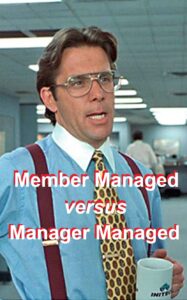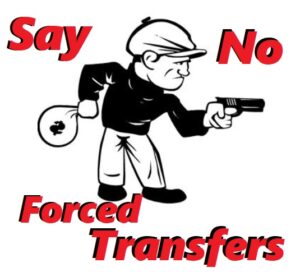The operating agreement sets out the basic structure of your business. A business is worth more with an operating agreement customized to its circumstances. The benefits include:
- Risks are reduced.
- Legitimacy is increased.
- There is a clearer idea of what is to occur and how it will occur.
Government regulators, tax auditors, and licensing officials require businesses to produce their operating agreement for government scrutiny. Lawsuits subpoena the operating agreement to determine whether the owners’ personal assets will be taken.
Ironically, custom operating agreements are relatively inexpensive. Yet, many businesses make simple, avoidable operating agreement mistakes.
MISTAKE #1 – PUTTING LITTLE THOUGHT INTO WHAT THE OPERATING AGREEMENT SAYS, AND FAILS TO SAY

One problem is the business managers do not know what is in the operating agreement; or worse, they do not know what the operating agreement is missing. It is common for businesses to get their operating agreement in three ways:
- Downloading an operating agreement that “looks good.”
- Hiring an inexperienced lawyer to draft the operating agreement
- Delegating to an employee who wants to “check the box.” In other words, they think “Boss wants an operating agreement. I got him an operating agreement. Box ‘checked.’ Move on to my next task.”
You will sustain the harm of not thinking ahead, later. An event will occur where the contents of the operating agreement will matter. Big, expensive problems will result. These events include:
- A lawsuit where the claiming party wants the owners’ personal assets,
- An owner gets a divorce,
- A tax audit,
- A license needs to be obtained,
- A potential merger, acquisition, or sale arises,
- Bankruptcy,
- One owner wants to leave the business,
- One owner wants to sell his ownership interest to someone else,
- An internal disagreement between managers or owners.
Owners are obligated to act exactly how the operating agreement states. If an owner acts in a way that differs from the operating agreement; the owner is in breach. Matters get bad, quickly. Failure to prepare is preparing to fail.
MISTAKE # 2 – MEMBER MANAGED AND NOT MANAGER MANAGED
Operating Agreements set out two ways to divide decision authority and responsibility. They are:
- Member Managed, and
- Manager Managed.
Member Managed

Member managed organizations divide decision making responsibilities and authority based upon share of ownership. The owners of the company each have duties to act for the betterment of the business. The owners have authority to make decisions.
Manager managed organization delegate the responsibilities and authority to a particular person, or group of persons. Decisions are not made based upon ownership, but rather on the duties set out in the operating agreement. Business owners can reserve the right to hire and fire executives. However, the practical running of the business is delegated.
Imagine a small but growing crypto startup wants to create blockchain infrastructure bridges so that one crypto blockchain can efficiently transfer tokens to other crypto blockchains. In crypto businesses, there are many specialized experts. There are people skilled in one field, and not as skilled in other fields. Business progress is uneven. Business challenges can be overcome quickly, or get bogged down for months costing millions.
A blockchain solution architect may be greatly skilled at designing, and connecting blockchain solution components to developers, network administrators, UX designers, and IT operations. However, one would not want a blockchain solution architect handling managerial accounting, even if he is an owner.

A blockchain legal consultant may have a great grasp of international law, SEC registration, and contracts to secret confidential information. It would be a mistake for a blockchain lawyer to have responsibilities and authority to manage the programming of C++, Python, and JavaScript, even if the blockchain lawyer is an owner.
An operating agreement that uses member managed responsibility makes these mistakes. In a Manager-Managed company, an owner can still be the President, or any other position, based upon his or her abilities and desire.
Remember: governments require the disclosure of certain members (owners) and executives, depending upon the jurisdiction. The Member Managed business structure reduces owner privacy. The better road is Manager Managed operations.
Manager Managed

An operating agreement that mandates Manager managed operations allows skills, experience, and passion to be paired with the best position within the business. It avoids the two problems of:
- A “Jack of all trades is Master of none,” and
- “Too many cooks in the kitchen.”
Owners hire experienced professionals to act on behalf of the business. Owners could also delegate between themselves responsibilities and authority based upon their abilities. The point of manager managed operations is that specialization and division of authority and responsibility occurs. An operating agreement that fails to use the advantages of a Manager managed operation is making a mistake.
MISTAKE #3 – FORCED TRANSFER OF OWNERSHIP
Owners of a business want to have a say in who is their fellow owner. Circumstances can cause a change of ownership. Ownership transfers can result from:
- sale,
- death,
- divorce, or
- creditor collections.

These events can cause owners to be forced to be business partners with persons they do not know, or do not like.
More commonly, forced transfers of ownership cause the business to no longer be aligned with the owner’s vision of the business future. Forced transfer of ownership can cause a critical loss of business owner skill and experience. Forced ownership transfers can make it easier for creditors to get at business assets.
An operating agreement should contain language that restricts how ownership is transferred. Restrictions on transfer of ownership can include right of first refusal provisions
MISTAKE #4 – FORCED DISTRIBUTIONS
Operating agreements contain clauses that mandate that money profits be distributed to owners at certain times, like:
- Yearly
- Quarterly
This is called a “forced distribution.” There is logic behind a forced distribution. An owner may incur tax liability based upon the increased value of the business and need money to pay those taxes rather than the money being kept in the business. An owner may have money needs and wants assurance that the owner’s investment profits will return so bills can be paid. An owner may not entirely trust executives who would rather use stock buy backs, or research and development, or investments rather that distribute business profits to business owners. Remember, if it is a Manager Managed business, the executives have this authority.
Pro Rata Distributions
Owners with money return concerns occasionally draft forced distribution language into the operating agreement. These clauses are intended to guarantee the flow of profits back to the owner. The most common forced distribution technique is the Pro Rata Distribution.
Pro Rata clauses in operating agreements mandate that whenever money is allocated to an owner, each owner must receive a money distribution equal to their respective share of company ownership (pro rata). This is a mistake.
One owner may be involved in litigation where he might become a debtor. The owner of the owner’s debt could then use the pro rata forced distribution to take money from the company.
One owner may be going through a divorce. That divorcing owner may wish to simplify the divorce proceedings by avoiding the profit distributions a pro rata forced distribution clause would mandate.
If nothing else, the management of a business should make profit distributions based upon the status of the business, the opportunities, and risks. A Pro Rata forced distribution takes away the flexibility management may need to act in the business’ best interests.
Right to Return of Capital provisions in operating agreement cause similar problems. These are provisions where an owner can demand their invested capital back from the business. This can cause liquidity, cash flow, and other problems within the business with large capital losses occurring without planning.
A Work-Around to Forced Distributions
An owner can make themselves a manager or executive. They would then have the authority to send money out of the business to themselves, or the other owners. It would be a matter of discretion, rather than a mandate. The mandatory nature of a forced distribution is its main vice.
Lawsuit Collection Risk with Forced Distributions
What if there is a money judgment from a lawsuit? Over 200 crypto class action lawsuits have been filed against crypto companies thus far. In 2022, a Florida jury awarded $143 million dollars on a bitcoin conversion lawsuit for proof of work blockchain mining company W&K Info Defense Research. That judgment included over $43 million dollars in judgment interest, alone! An operating agreement that mandates forced distributions can force money out of a business to a lawsuit creditor.
Forced distributions are problems when there is a charging order (like a garnishment, but for an owner). There could also be a legal enforcement action against an owner. A clause can be added to an operating agreement indicating that if an owner is under duress, the company managers are not under an obligation to distribute money to the owner, even if the owner requests or demands the money. Any creditor can look to the operating agreement and require the business to pay out its money.
MISTAKE #5 – INCONSISTENT CORPORATE STRUCTURE LANGUAGE
Many Operating Agreements use language that is more consistent with a partnership corporate structure than any other. Yet other business documents may represent another business structure. These other business documents are the:
- Articles of Incorporation,
- Tax filings,
- Lawsuit representations,
- License applications
- Indemnification Agreements
- or how the business is actually run on a day-to-day basis.
It is critical that the operating agreement be analyzed, not only for the details within the agreement, but also its relationship to other business documents and filings. Companies have multiple structure options, which include:
- Sole Proprietorship
- C-Corporation
- S-Corporation
- LLC
- Partnership
- Non-Profit
If the IRS, or a Court, or a Licensing Authority looks to your operating agreement and sees that your business is actually set up as a different corporate structure, it may declare that other structure. A change in declared corporate structure can have massive money, legal, and practical consequences you do not want to experience. The way to avoid these inconsistencies is to analyze the operating agreement as it relates to the business’ other documents, and filings.



